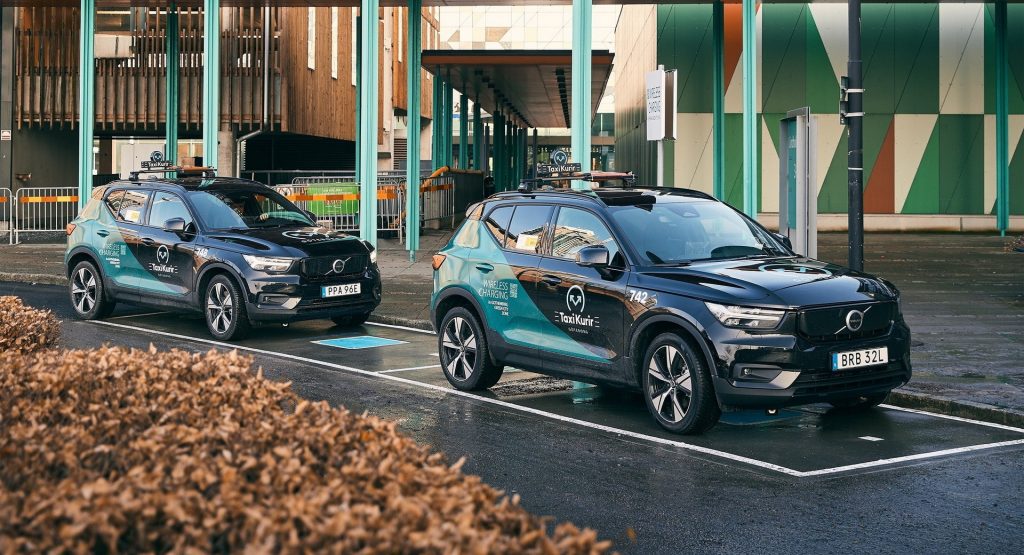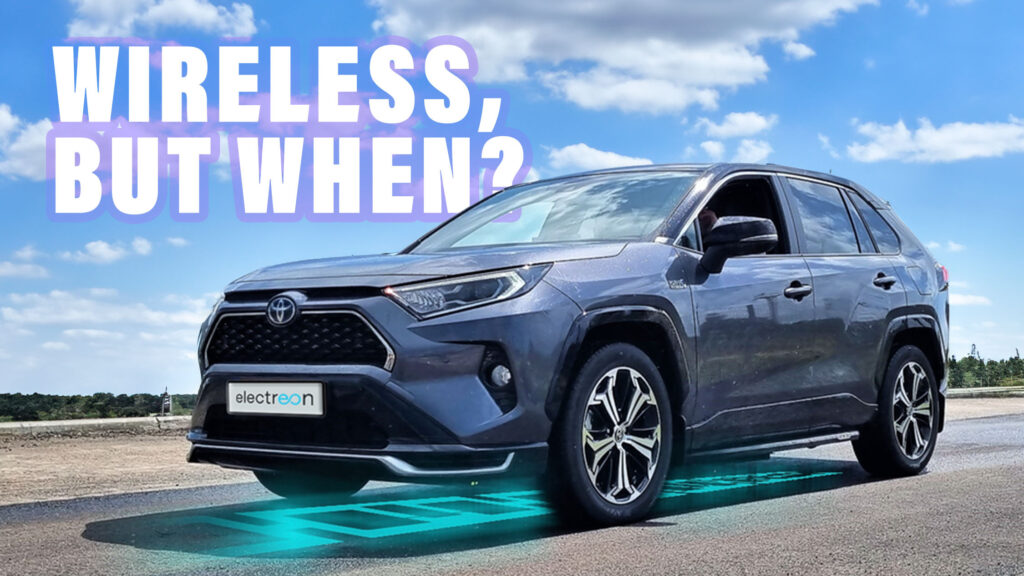Imagine if, to change the channel on your TV, you had to use a device connected to your screen by a wire that trailed across your living room floor, looked messy and represented a trip hazard to everyone in the house. It sounds ridiculous now, but that’s exactly what TV buyers had to contend with when Zenith created the world’s first remote, the “Lazy Bones,” in 1950.
Maybe that’s what future EV buyers will think when they see archive footage of us struggling to hook up dirty, fire hose-like cables to our electric cars. Because in the future, we’ll surely charge our new cars like we charge our phones in our new cars. Yes, inductive charging – as promised by Chrysler’s recent Halcyon EV concept – is definitely the future, but how far in the future is it?
Related: Tesla Quietly Buys German Wireless Charging Tech Firm
Unfortunately, as a recent Bloomberg story explains, it might be further off than cable-phobes would like. If you’re talking about converting the road surfaces of entire interstate networks into giant charging pads, then that’s years away from going mainstream because of the mammoth cost involved.
Some trials have been made for the tech, there are some short stretches of inductive road operational for select (non public) vehicles around the world, including in the U.S., and last year Electreon drove a RAV 4 PHEV for over 100 hours without depleting its 18 kWh battery on a circular test track, so yes, the tech exists, but it’s not going to become commonplace any time soon.
A more likely way for induction charging to be adopted on a large scale in the medium term is in parking bays. Instead of having to manually attach a cable at a charging station, or even have a robot do it for you, as VW demonstrated at CES earlier this year, we’d simply drive into a designated parking spot, maybe press a button on the touchscreen or issue a voice command to authorize the charging process, and the electricity would start flowing automatically.

The actual charging process isn’t that different to the one taking place when you lay your phone on the charging pad in your car or on your desk. An electric current sent through a coil embedded in the road surface creates a magnetic field that generates electricity in a second coil on the car, and that electricity is used to fill the battery. Thankfully for those of us not running SEMA-spec airbag suspension, EVs don’t need to be flush with the charging surface like phones do.
Even that tamer version of induction tech isn’t not going to go global in 2024, though, because there are still several barriers preventing mass adoption. One has traditionally been slow charging speeds, something you’ll be familiar with if you use an induction charging pad to top up your smartphone’s battery. Bloomberg explains that many wireless EV chargers are only as fast as a Level 2 charger, so way slower than the speedy DC chargers automakers refer to when quoting their 15-minute refill times. Brooklyn-based Hevo is, however, working on a 300 kW wireless fast charger, so it sounds like the tech will eventually catch up with the wired kind.
Another holdup is the cost of both the infrastructure and the extra hardware an EV needs to make inductive charging work. Right now that hardware could add $2,500 to the price of a new EV, though the cost is expected to fall in coming years.
So the combination of the extra expense and the shortage of places where people can use the charging capability means few automakers have expressed much of an interest. Except for some Chinese automakers, and, you guessed it, Tesla, which acquired German wireless tech firm Wiferion last year, and whose design boss recently told Jay Leno that the company was actively working on an inductive charging pad that owners could place on their garage floor.
These kinds of above-ground charging pads seem like they’ll be the type of induction charging devices that will take off first. Last year WiTricity unveiled its Halo aftermarket charging pad, which can charge at 11 kW – the same as a Level 2 charger and so enough for 35-40 miles (56-64 km) of range for every hour of charging, and cable of refilling a Tesla Model 3 in six hours.
Those of you with longer memories might remember that BMW already did something similar years ago. A trial program that launched in Germany in 2018, and was then expanded to California in 2019, gave a few hundred 530e owners a 3.2 kW charging pad they could use at their home to top up their hybrid’s tiny 9.2 kWh battery in 3.5 hours. Though we’ve not heard any more about the tech since, we can’t believe BMW has given up on the idea (we’ve asked BMW and will report back).
One barrier to adoption that has been knocked down, Bloomberg reports, is a lack of standardization. The SAE has already established a standard for wireless charging in light vehicles, including cars, and that means infrastructure projects are now much more likely to get funding than they were previously, and automakers can start to think about including the tech on our next EVs and hybrids.




